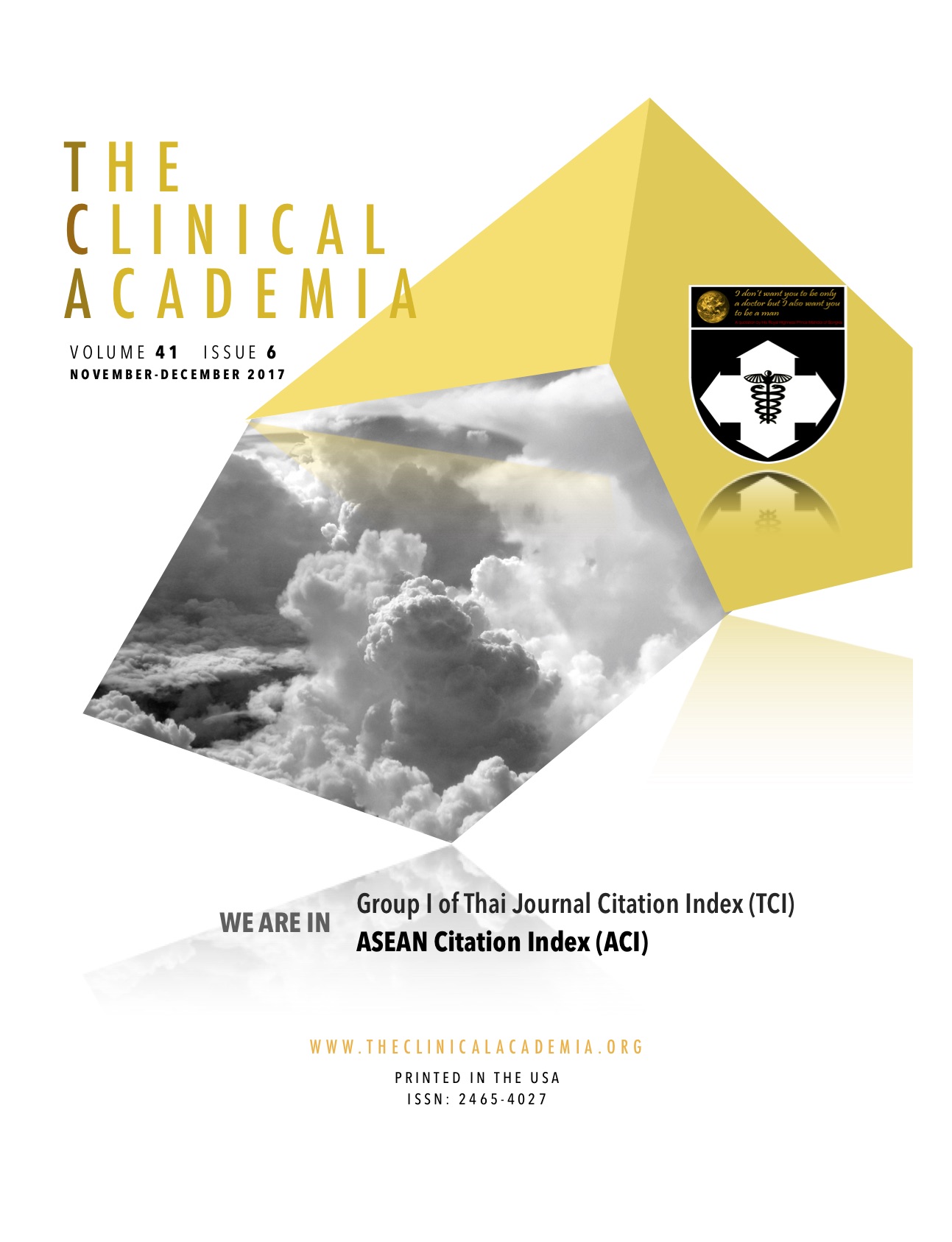Postoperative fever in teenagers undergoing appendectomy using purse string suture versus double ligation technique
บทคัดย่อ
OBJECTIVE
To compare the rate of postoperative fever in teenagers undergoing appendectomy using purse string suture versus double ligation technique
METHODS
We conducted a retrospective cohort study by reviewing all medical records of patients age between 10 and 19 years old who were diagnosed uncomplicated acute appendicitis intraoperatively in Khon Kaen Hospital. from January 1, 2010, through July 1, 2014. The primary outcome was the postoperative fever. Secondary outcomes included wound dehiscence or evisceration, intraperitoneal or pelvic abscess, positive bacterial culture, postoperative peritonitis, intraoperative bleeding, operation time and length of hospital stay.
RESULTS
The study comprised a total of 579 patients (123 in purse string suture group and 456 in double ligation technique group).There were no significant difference between the purse string suture group and double ligation group regarding the postoperative fever (hazard ratio [HR], 0.92; 95% confidence interval [CI], 0.44 to 1.93; P=0.832), there was one patient who had wound dehiscence in the latter group. There was no intraperitoneal or pelvic abscess, positive bacterial culture and postoperative peritonitis occurred in the admission during the study period. The former group tended to have the higher amount of blood loss (P=0.021) longer operative time (P=0.030) and longer length of hospital stay (P=0.001).
CONCLUSION
The rate of postoperative fever using purse string suture and double ligation technique in appendectomy were no significant difference.



